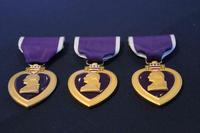 TAMPA -- Experimental light weight body armor, the latest in infrared sensors, and next-generation night-vision technology are all among a series of key areas of focus for the U.S. Special Operations Command’s Science and Technology community, service officials said May 14 at the 2013 Special Operations Forces Industry Conference here.
TAMPA -- Experimental light weight body armor, the latest in infrared sensors, and next-generation night-vision technology are all among a series of key areas of focus for the U.S. Special Operations Command’s Science and Technology community, service officials said May 14 at the 2013 Special Operations Forces Industry Conference here.
Special Operations leaders have made developing technologies to improve small unit dominance, human performance, battlespace awareness and Anti-Access/Area Denial (A2/AD) a priority as the coffers funding modernization get smaller even for SOCOM, said Karen Sander, director of SOCOM S&T.
A2/AD is a much-discussed Pentagon theme often geared toward potentially adversarial nation-states like China and Iran. SOCOM forces, however, will need stealthy access, long-range Intelligence Surveillance and Reconnaissance (ISR) and mobile transportable electrical power for a wide range of potential combat environments.
As a result, SOCOM S&T is immersed in locating a range of non-lethal, surveillance and “insertion” technologies to help forces maneuver, Sanders said.
Non-lethal weapons are another focus for SOCOM S&T because many of their operations might require them to thwart an assailant or render an enemy still without necessarily using lethal force.
One of the key ways that SOCOM S&T identifies and attains emerging technologies is through a process they call Technical Experimentation -- a series of experiments designed to take place three times a year placing promising technologies, systems and capabilities in the hands of special operators in a combat-relevant environment.
The U.S. Army does something similar twice a year at Fort Bliss, Texas, and White Sand Missile Range, N.M. with the Network Integration Evaluations.
“It is not just a demonstration. The idea is for them to bring technology to see how it operates in a relevant environment with relevant users to gain some feedback. This will help them improve their technology and more directly meet our needs,” Sanders said.
The first two Technical Experimentation events for this year took place in Muscatatuck, Ind., and Avon Park, Fla.; the third and final experimentation event, to be focused on maritime technologies, is slated to take place later this year at Camp Roberts, Calif.
The recent experimentation in Indiana was specifically focused on identifying potentially useful urban technologies. For examples, the experiment was able to assess communication equipment as well as software and digital mapping technologies, Sanders said.
In preparation for the events, Broad Agency Announcements are sent to vendors, government service laboratories and academic partners interested in proposing or submitting technologies and systems for the experiment. At the same time, if participants have a worthy idea that does not adhere to the stated theme, they are encouraged to propose or submit their ideas regardless, Sanders explained.
“These experiments help us to find where the real break points are in terms of capability,” she added.
For instance, key information was learned about the abilities of “Lidar” to help special operators navigate through a degraded visual environment, or situation wherein vision or awareness is temporarily obscured. The Technical Experimentation helped discern the difference between dusk and smoke as it pertained to Lidar, a sensing technology which combines radar-type approaches and laser technology, Sanders explained.
“We’re looking to do a new acquisition with Lidar. We set up a specific focus with Lidar as a subset of one of our avenues. We realized there’s a difference between dusk and smoke. This experimentation can help us set our standards so that we don’t set a minimum threshold that no-one can meet, or so that we don’t set an objective that everyone can meet. You want to get your criteria so that it is a challenging enough problem,” Sanders added.









